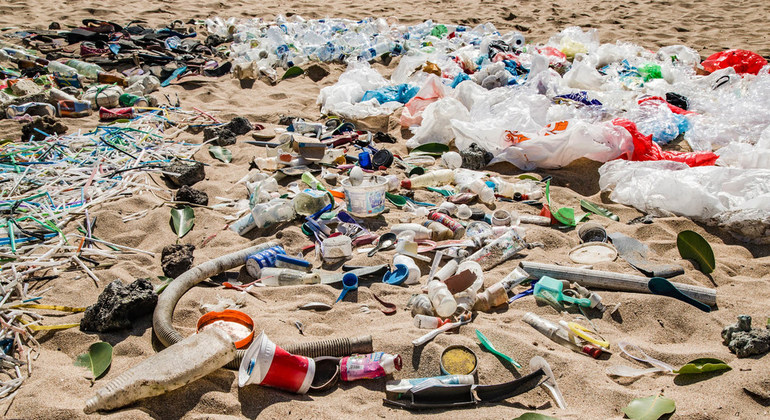UNEP launched the Clean Seas Campaign in 2017 to galvanize a global movement that tackles single-use plastics and microbeads.
Now in its second phase, it is shining a light on specific aspects of marine litter, such as plastic pollution generated by the cosmetic industry.
Many consumers are not aware just how much plastic there may be in the personal care items they use daily on their faces and bodies.
From the plastic in packaging to the under-5mm microplastics hidden within the products, including beads or glitter, they are designed to wash down the drain, travel through rivers and ultimately end up in the sea.
Microplastics are too small to be filtered out by waste treatment plants and attract waterborne toxins and bacteria that stick to their surfaces. Because they look like food, they are eaten by fish, amphibians, insect, larvae and marine animals as well as seabirds and other marine life, blocking digestive tracts and causing physical problems.
In addition to endangering marine life, the health implications of microplastics on humans are not yet fully known, but considering their prevalence in clothes, food, water and cosmetics, are expected to be far reaching.
For the next week, UNEP is inviting consumers everywhere to examine products in their bathrooms and switch out those with microplastics for safer alternatives.



